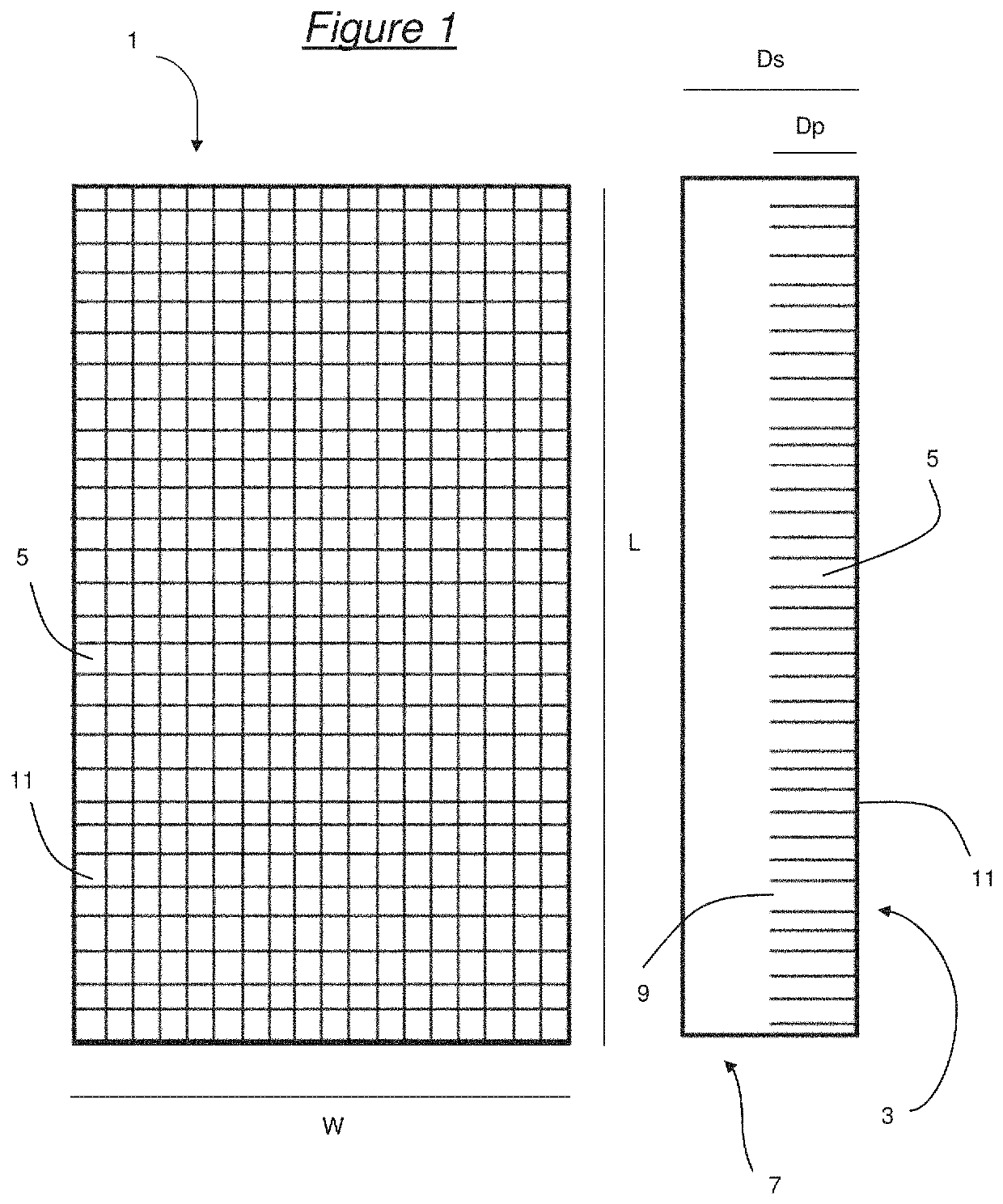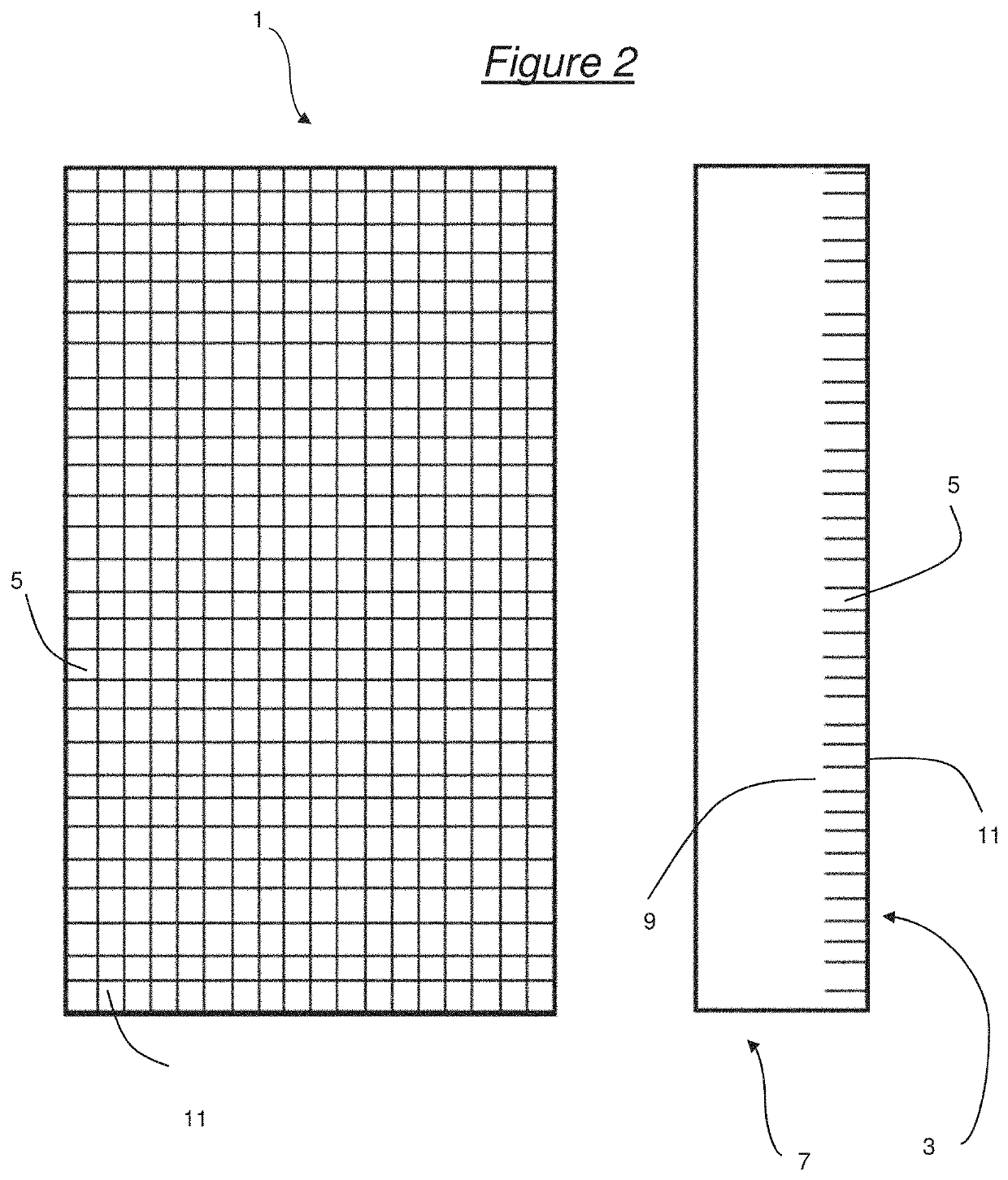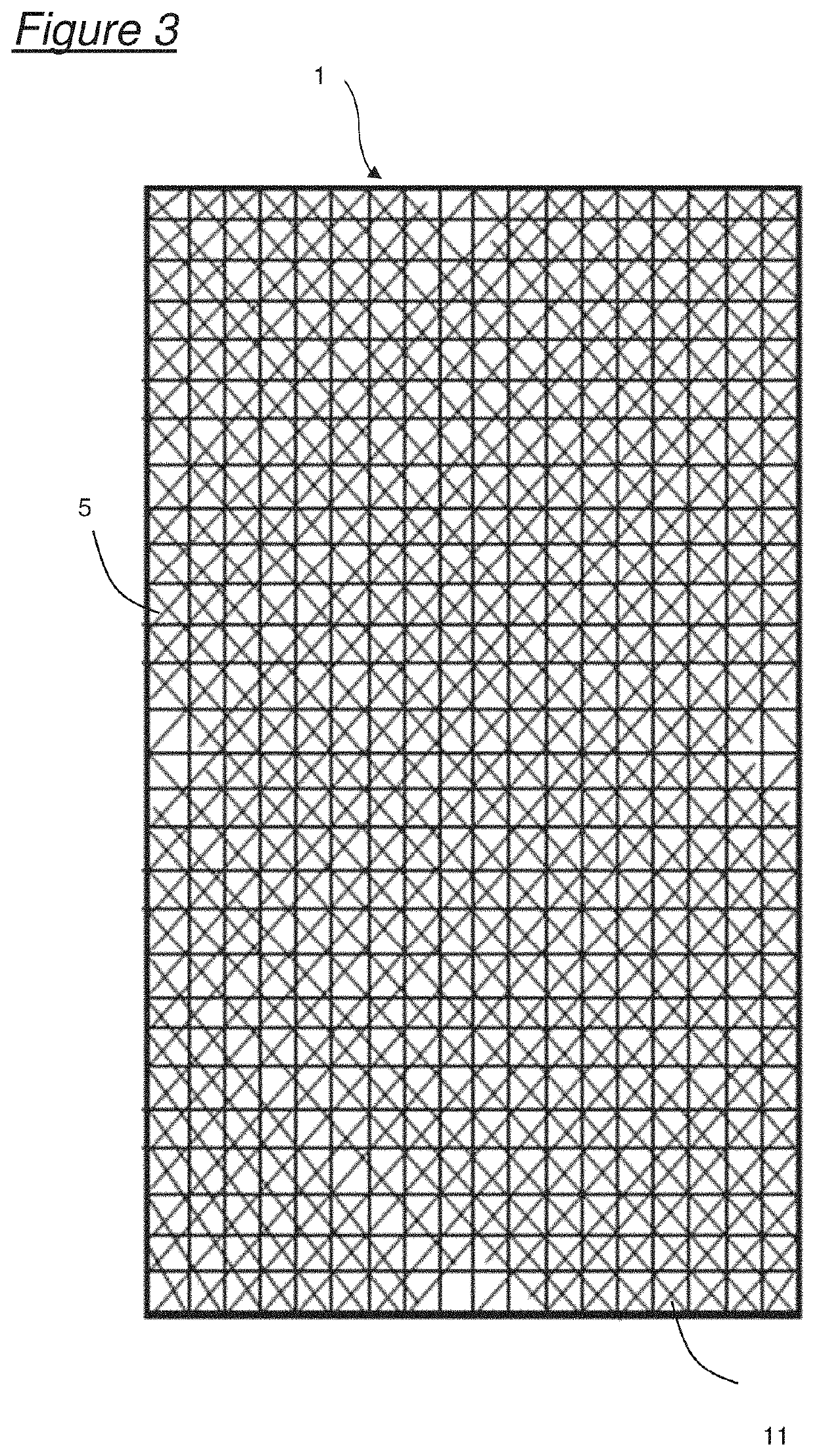Haemostatic device
a technology of haemostatic device and sponge, which is applied in the field of haemostatic device, can solve the problems of poor adhesion, poor adhesion of conventional sponge, and inability to conform to the wound in the same manner, so as to increase the surface contact with the wound, facilitate the adhesion, and effectively transmit the effect of the spong
- Summary
- Abstract
- Description
- Claims
- Application Information
AI Technical Summary
Benefits of technology
Problems solved by technology
Method used
Image
Examples
example 1
on of Surface Modified Gelatin Foam Sponges
[0116]Sample A: A sponge having the general form shown in FIG. 1 was prepared as follows. A series of incisions were made on a surface of gelatin foam sponges (GelitaSpon by Gelita) using a sharp razor blade (0.1 mm to 0.3 mm width) to create columnar or finger-like tissue-contacting elements on the surface. Incisions were made along the length at 0.5 mm to 2 mm intervals, and to a depth of about 5-8 mm, and a series of widthwise incisions were also made at 0.5 mm to 2 mm intervals at a depth of 5-8 mm. The result was the creation of tissue-contacting elements with substantially rectangular cross-sectional shapes, each having an end face with an area of 0.25 mm2 to 4 mm2. Each sponge had a length of about 30 mm, a width of about 20 mm and a thickness of about 10 mm.
[0117]Sample B: A sponge having the general form shown in FIG. 2 was prepared as follows. A series of incisions were made on a surface of gelatin foam sponges (GelitaSpon by Geli...
example 2
Electron Microscope Images of Surface-Modified Gelatin Foam Sponges
[0122]Scanning Electron Microscope (SEM) images of the surfaces of the some of the samples were taken using a JEOL 6060LV variable pressure scanning electron microscope with a Leica EM SD005 sputter coater.
[0123]FIGS. 5a, 5b and 5c show SEM images of Sample A (plan view) at various magnifications. The face of the tissue-contacting element in FIG. 5b has a surface area of approximately 1.5 mm2.
[0124]FIG. 5d shows a SEM image (×13 magnification) of Sample A (side view) showing tissue-contacting elements with a depth of about 8 mm.
[0125]FIGS. 6a, 6b and 6c show SEM images of Sample B (plan view) at various magnifications.
[0126]FIG. 6d shows an SEM image (×14 magnification) of Sample B (side view) showing tissue-contacting elements with a depth of about 2 mm.
[0127]FIG. 7 shows an SEM image (×13 magnification) of Sample D (plan view).
example 3
dhesion of the Surface-Modified Gelatin Sponges in a Surgical Procedure
[0128]Rabbits (New Zealand White males weighing approximately 3 kg) were prepared and anaesthetised using standard procedures, and the liver uncovered. Biopsy punch holes (5 mm diameter and 4-5 mm deep) were made in the liver lobes, and Samples B and D (control) were placed on the wound and compressed for 1 minute with gauze. Lightly bleeding biopsy wounds were selected such that the sponges would not be fully soaked with blood when placed on the wound. After three minutes the sponge was lifted at one corner with forceps. A further control was also tested: Tachosil (Takeda), a collagen sponge with immobilised thrombin and fibrinogen. Each treatment was replicated three times and the observations were consistent.
Results
[0129]
SpongeImageCommentSample BSee FIGS. 8a and 8bAdhesion is very strong.Lifting the spongecauses the liver to bepulled. The sponge stretchesbut remains attached tothe liver.Sample DSee FIGS. 9a a...
PUM
| Property | Measurement | Unit |
|---|---|---|
| depth | aaaaa | aaaaa |
| depth | aaaaa | aaaaa |
| cross-sectional area | aaaaa | aaaaa |
Abstract
Description
Claims
Application Information
 Login to View More
Login to View More - R&D
- Intellectual Property
- Life Sciences
- Materials
- Tech Scout
- Unparalleled Data Quality
- Higher Quality Content
- 60% Fewer Hallucinations
Browse by: Latest US Patents, China's latest patents, Technical Efficacy Thesaurus, Application Domain, Technology Topic, Popular Technical Reports.
© 2025 PatSnap. All rights reserved.Legal|Privacy policy|Modern Slavery Act Transparency Statement|Sitemap|About US| Contact US: help@patsnap.com



